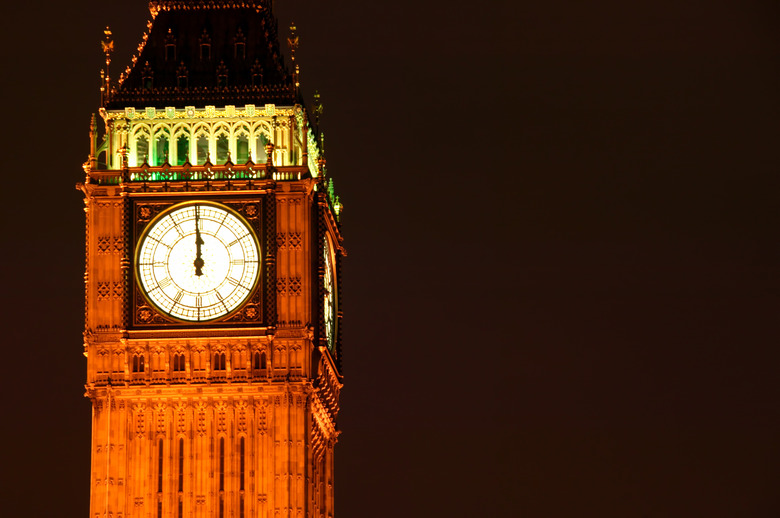At What Location On Earth Does Each New Day Begin At Midnight?
Each day on Earth begins at midnight in Greenwich, England, where the prime meridian is located. Originally, the prime meridian's purpose was to help ships at sea find their longitude and determine accurately their position on the globe. The calibration of chronometers – time measurement instruments – with solar time was necessary to find longitude. Determining longitude soon led to the establishment of time zones and a coordinated, international standard time. In modern times, atomic clocks have replaced solar time.
Royal Observatory
Royal Observatory
The Royal Observatory in Greenwich, England, is the key location for timekeeping worldwide. It is also located at the internationally recognized prime meridian, which is 0 degrees longitude, where each day begins at midnight. All locations on Earth are marked off east and west of the prime meridian in the same way that locations are measured north and south from the equator. The Royal Observatory was established in 1675 by King Charles II to help ships at sea calibrate their chronometers to determine longitude and location. The standard set for timekeeping, a key component in determining longitude, at Greenwich made it the timekeeper of the world.
Greenwich Mean Time
Greenwich Mean Time
Because solar time, as measured by a sun dial, can vary as much as 16 minutes throughout the year, a mean time must be calculated so that the marking of time can be standardized. This is known as Greenwich Mean Time, or GMT. The rotation of the Earth causes variation in solar time east to west, and noon at one location may be 3 o'clock at another. A standardized location, or prime meridian, was required to accurately calculate mean solar time and mark time differences by longitude. This process also established the 24 time zones across the globe, and the prime meridian is used as the starting point for each new day at midnight.
Prime Meridian
Prime Meridian
Historically, one of the great difficulties in ocean navigation was determining longitude. To determine longitude, a ship captain had to know the exact moment of high noon at his position at sea, in addition to high noon at a common location, or the prime meridian. This required highly calibrated chronometers to keep time, and the Royal Observatory eventually became the keeper of time, as its astronomers could accurately record high noon. But various countries chose to position their prime meridians in different locations to suit local needs, making coordination between nations difficult. To solve this problem, Greenwich, in 1884, became the official site of the prime meridian and the location for each new day and year to begin.
Coordinated Universal Time
Coordinated Universal Time
Keeping accurate time has become sophisticated and necessary for the complexity of the modern world. Coordinated Universal Time, or UTC, is used as the correct time worldwide, and has replaced GMT as the standard. The prime meridian is where UTC is established. While historically, astronomers set GMT using solar time, UTC is more precise and depends upon atomic clocks. Solar time can have some margin of error due to irregularities in the Earth's rotation, but atomic clocks are calibrated to be accurate to the billionth of a second.
Cite This Article
MLA
Peterson, John. "At What Location On Earth Does Each New Day Begin At Midnight?" sciencing.com, https://www.sciencing.com/location-earth-new-day-begin-midnight-6455/. 13 March 2018.
APA
Peterson, John. (2018, March 13). At What Location On Earth Does Each New Day Begin At Midnight?. sciencing.com. Retrieved from https://www.sciencing.com/location-earth-new-day-begin-midnight-6455/
Chicago
Peterson, John. At What Location On Earth Does Each New Day Begin At Midnight? last modified March 24, 2022. https://www.sciencing.com/location-earth-new-day-begin-midnight-6455/
